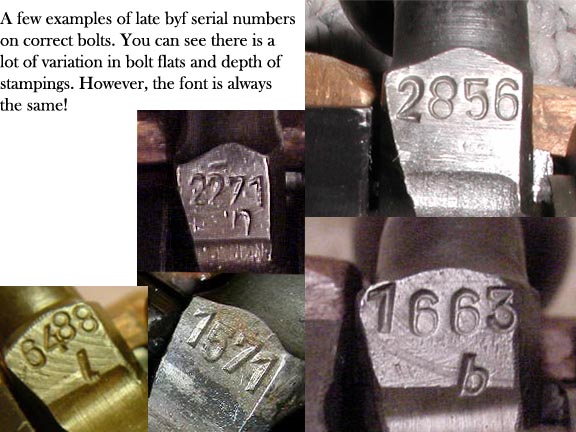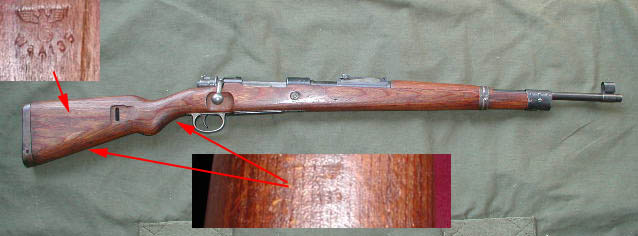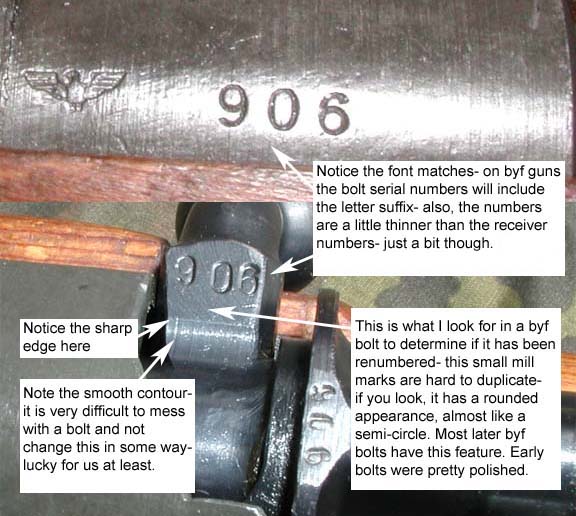byf and svw rifles
The rifles made by Mauser Oberndorf are probably one of the most prevalent. There are quite a few variations even in the last few months of the war. Little history- FN Manufacturing made bolts for byf until late September, when the FN plant was overrrun. At that point, byf had to find bolts elsewhere. There are 3 main categories for bolt markings on byf guns- those with a "l" proof, those with no proof, and those with RW proof. Some 140 proof bolts may show up, but these were generally used up by December. The top flat finish will differ between each maker- some appear tall with mill marks, some appear flat and smooth. Examples of original byf bolt serials:

Now for the scary part- here is a recent renumberd bolt from an early ar marked rifle. I have to add this caveat-- I am not 100% certain it was not wartime renumbered. The font and style are so good as to be impossible to duplicate. However, this bolt had a different serial when it started life. The red arrows point to the problem areas- notice the uneven machine marks on the safety. Also, look at the sharpness of the edge on the cocking piece- plus the odd file marks on it. Lastly, notice the odd blue color on the flat parts. These are things to look for along with font. Honestly, this bolt fooled me at first, and would probably fool most collectors.

Don't forget the basics- ALL late byf bolts have the last 4 digits along with the suffix. There are no 5 digit bolts on 45 date rifles. There were some 5 digit bolts on the first byf43 rifles with 5 digit serials, but the beginning number was stamped above the rest. Also, late byf bolts lack serials on the safety only- the cocking piece will have last 2 digits, firing pin will have last 2, and gas shield will have last 4 digits. I have seen people overlook this simple fact.
Late byf/svw rifles come in several different configurations as well-- full Kreigsmodell, semi-Kriegsmodell, and standard style with bayonet lug and takedown disc. I must say that the semi- Kriegs byf stocks are not common, those being the type with hole in the buttplate, no disc, but still having bayonet mount and cleaning rod. The most common are full Kriegsmodell stocks. All correct stocks will have Wa135 proof on the side, except some late svwMB rifles which are not proofed. There are other interesting sub-variations, such as Wa37 proofed on the keel, and C proofed on the keel. These stocks have a large Asterisk above the keel marking, and are Wa135 proofed on the side of the butt. Below is an example of the most common configuration and markings:

Lastly, a note on fonts. I prepared the following graphic a few years ago. It is still very good information, but one thing I would add is that the mill marks on the bolts do not always show up. This feature changes from gun to gun- if a "l" proofed bolt they are like this- the RW proof and no proof bolts generally show poor finishing and inconsistent features. Some are very flat and smooth, like a renumbered bolt. In cases such as this, you have to take the finish and balance of the bolt into consideration. The bolt should always match the wear patterns of the rifle- keep that in mind.


